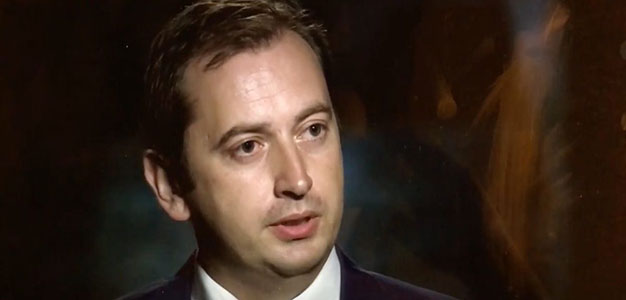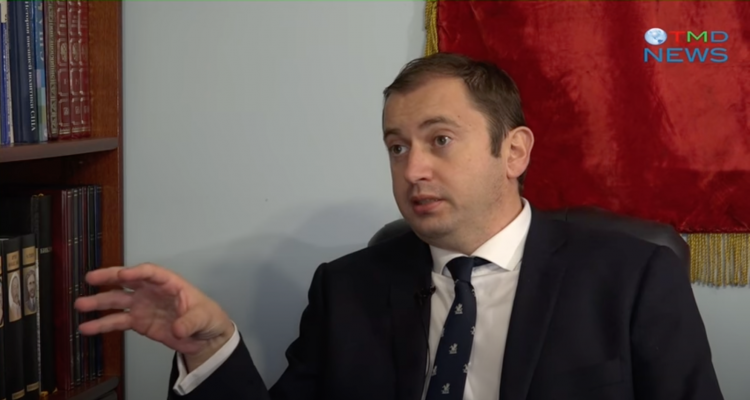
by Paul Sperry at RealClear Investigations
In January 2017, Igor Danchenko, a primary source for the Steele dossier, told FBI officials in a debriefing that one of his sources for derogatory information about Donald Trump’s alleged ties to Russia was merely an anonymous voice on the other end of a phone call that lasted 10-15 minutes.
The voice, Danchenko claimed, was someone he assumed to be Sergei Millian, an immigrant from Belarus, president and founder of an organization called the Russian-American Chamber of Commerce. As thin as that sourcing sounds, the truth appears to be worse. According to a new criminal indictment, Danchenko lied to FBI agents: There was no voice and there was no phone call. The Russian national made it all up.
Still, the FBI continued to use Danchenko’s supposed source’s claims of a “well-developed conspiracy of cooperation” between Russia and Trump to convince a secret federal court to allow investigators to electronically monitor at least one Trump campaign adviser, Carter Page, whom the FBI accused of masterminding the conspiracy based on Danchenko’s dubious claims. Agents swore in court documents reviewed by RealClearInvestigations that Danchenko was “truthful and cooperative,” even after discovering he misled them regarding his allegedly well-placed source.
The combination of Danchenko reporting a “conspiracy” and the FBI vouching for his credibility persuaded the powerful Foreign Intelligence Surveillance Court to authorize wiretapping Page as a suspected Russian agent for almost a year. Page was never charged and is now suing the FBI and Justice Department for $75 million.
Special Counsel John Durham detailed the alleged dossier fiction in a grand jury indictment unsealed last week charging Danchenko with five felony counts of lying to the FBI — four of which relate to the invented phone call with Millian, a New York Realtor who was in reality a big fan of Trump.
“Danchenko never received such a phone call or such information from any person he believed to be [Millian], and Danchenko never made any arrangements to meet [Millian],” the indictment states. “Danchenko fabricated these facts.”

When his name first publicly surfaced in early 2017 as a key source of the dossier, Millian said he emphatically denied it in interviews with the Washington media, who were scrambling to corroborate the dossier. He showed RealClearInvestigations emails he exchanged with reporters for the Washington Post and Wall Street Journal — Rosalind Helderman and Tom Hamburger from the former and Mark Maremont from the latter — in which he tried to steer them off the story, insisting it was “a vicious lie” and a smear campaign against him and the incoming Republican president. But the newspapers nonetheless reported he was the source for the most explosive parts of the dossier, including the claim that Russian President Vladimir Putin had compromising sex tapes of Trump and that he and Trump were engaged in a “well-developed conspiracy” to steal the 2016 election.
Asked for comment, Maremont of the Journal responded, “I don’t know you or your outlet,” then referred a reporter to media relations for his paper’s publisher, Dow Jones. The Post reporters did not return requests for comment.
Looking back, Millian speculates that reporters took the word of Glenn Simpson and their other contacts at Fusion GPS over his. A paid Clinton campaign contractor, Simpson hired former British intelligence officer Christopher Steele, who in turn hired Danchenko, a former Brookings Institution analyst, to collect dirt for the Clinton dossier. The 42-year-old Millian contends that it was Simpson’s opposition-research shop that put him on the radar of those digging for dirt on Trump, while also pitching his name to journalists at the Post and Journal, as well as the New York Times, who were frenetically covering the “Russiagate” story at the time.
“Clearly I got nothing to do with any of this crazy dossier,” Millian told RCI. “I denied it from the very beginning. It’s all fake from beginning to end.” He added that, in effect, the Clinton campaign and its operatives were trying to “frame” him in order to tar Trump as a president compromised by Moscow. Durham’s investigation, as well as earlier federal probes of the origins of the dossier, appear to back up his claims.
In the fall of 2016, Danchenko’s alleged fabrications about Millian were also fed to the FBI by then-top Justice Department official Bruce Ohr, whose wife, Nellie, worked for Simpson as a researcher on Trump’s alleged Russian connections, according to a 2019 report by Justice Department Inspector General Michael Horowitz.
Millian’s name was first dug up when Nellie Ohr found a photo on the Internet of Trump, Millian, and another businessman in 2007.
“Millian had popped up in Nellie Ohr’s early reporting for his ties to Trump,” Simpson co-wrote in the 2019 book “Crime in Progress: The Secret History of the Trump-Russia Investigation.” He added that Millian’s “record suggested a background entirely consistent with that of some sort of [Russian] state intelligence asset.”
“His role in the events of 2016 remains underappreciated, even today,” Simpson wrote. (He also maintained that Danchenko was considered “among the finest” of Russia analysts and “deserves a medal for service to the West”). Within weeks of Fusion’s research, Danchenko and Steele began using Millian as a stand-in source for false rumors that Trump was compromised by Moscow. Their scheme gained steam after Trump was elected. Their allegations not only formed the basis for continued surveillance of Page, but inspired a raft of congressional inquiries and other investigations that kept Trump’s presidency under a cloud of suspicion for his entire term in office.
After meeting with Simpson in December 2016…
Continue Reading